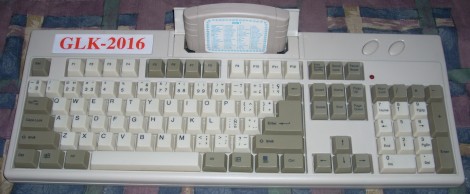
This is an 8-bit computer and Famicom clone that [133MHz] bought for $2. It plays Nintendo games and using an 80-in-1 cartridge it has a rudimentary operating system and set of applications. Seeing a standard DB25 port on the back [133MHz] wondered if he could make the system talk to a printer. His first step was to investigate the electronics inside to find that the connector has a couple of chips that map to the data bus of the CPU and use the same control lines as the cartridge. That means it can be setup to do just about anything in software. After a bit of coding he’s got it printing to a dot-matrix. See for yourself after the break.
[youtube=http://www.youtube.com/watch?v=dl1R4f5sKMA]
[Thanks Tomasito]















Am I missing something here? It appears that the setup was designed from the start to print.
OK, I see now… by working backwards, he thinks he can build the parts necessary to put a printer port into the Famicoms that don’t have one (but he hasn’t actually done it yet).
Wow, that column is horribly written.
What an amazingly worthwhile project playpower.org is. I wasn’t aware of that at all though I had vague recollection of a keyboard and Basic being available for Famiclones. Thanks Hackaday for blogging it.
Yergle-shmerg?
I’ve sent this one, and I’d like to point the playpower project. I think it’s an amazing thing that can be very good.
Also, thoose famiclones have a good hack potential.
Man buys Famiclones with 80-in-1 cartridges. Man notices print option in rudimentary word processor. Famiclone has no DB25 port. Later, man buys Famiclone with DB25 port. He plugs in a printer. It works. Contacted by PlayPower project. Man diagrams schematic for DB25 adapter.
I have one of these famiclones since 1995, and it includes 2 or 3 programs for printing, however I’ve never printed anything. Also it includes a BASIC compiler.. I learned programming in it. I loved it. A couple weeks ago I noticed that the ribbon connector from the keyboard was rusty… my “ASDER PC-95” is now a simple nes clone. BAD ENGLISH.
Isn’t this a repeat? I’ve seen this on here once already, unless I am going crazy…
Lol, chinese analogue (with russian keyboard and software) was named Subor, you can google for it. It has parallel port (but you weren’t able to store data on cassetted because it lacked the audio i/o).
I liked how a Famicom clone’s keybaord has a windows key. Lols.
What is “dot-matrix”? /s
@tim a printer that uses a set of 9 or 24 pins striking an inked ribbon to make dots to form low-quality text and graphics. A common type of computer printer prior to ink-jet printing becoming cheap and popular.
@NItrus… maybe you stumbled across this blog post after Hack a Day posted ‘Adding an RGB input to a cheap generic NTSC TV’ which is also on his blog?
Why are you hammering on that keyboard ? are these keys stuckt :-) hahahaha